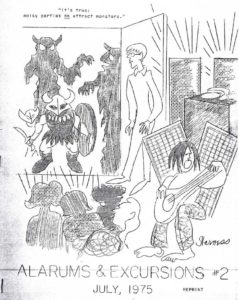Mercurius
Legend
This is a case where we should honor Gary Gygax for who he was and what he created, but not over idolize him. I mean, we can compare what TSR put out after he left, vs what he created. The "Golden Age of Settings"--and thus one of the most fruitfully creative periods in D&D's history--began in 1987 with the publication of the FR gray box, and then Spelljammer a couple years later. Gygax, on the other hand, created Dangerous Journeys, which wasn't exactly lauded or influential, or breaking any new ground.
Meaning, it is possible that a hypothetical TSR under Gygax would have remained closer to the fold and eventually stagnated, or at least remained more "Gygaxian." Nothing wrong with that, but then we might not have had the later waves of creative output.
This also relates to the nature of change. Change isn't always inherently evolutionary, despite what some say about the nature of recent changes - as if any changes, anything new or from younger generations is inherently a move forward. Sometimes change is regressive. But it is always good for someone and, in general, it brings new things to the table. I think the key is whether or not that change includes the old; meaning, if it transcends the limits of the old but adds to it, it is evolutionary. If it negates the old too much and goes in a specific direction that limits possibilities too much, it can become regressive.
So my point is, that under Williams--at least creatively--the change was evolutionary. D&D broadened substantially, and by 1995 you had a much richer range of play possibilities. The glut and eventual demise of TSR is related, but I don't think it would be correct to say that TSR's demise was due to the creative wealth; it had more to do with over-saturating the market (meaning, it was the breadth and quantity of product, not the depth or quality).
Meaning, it is possible that a hypothetical TSR under Gygax would have remained closer to the fold and eventually stagnated, or at least remained more "Gygaxian." Nothing wrong with that, but then we might not have had the later waves of creative output.
This also relates to the nature of change. Change isn't always inherently evolutionary, despite what some say about the nature of recent changes - as if any changes, anything new or from younger generations is inherently a move forward. Sometimes change is regressive. But it is always good for someone and, in general, it brings new things to the table. I think the key is whether or not that change includes the old; meaning, if it transcends the limits of the old but adds to it, it is evolutionary. If it negates the old too much and goes in a specific direction that limits possibilities too much, it can become regressive.
So my point is, that under Williams--at least creatively--the change was evolutionary. D&D broadened substantially, and by 1995 you had a much richer range of play possibilities. The glut and eventual demise of TSR is related, but I don't think it would be correct to say that TSR's demise was due to the creative wealth; it had more to do with over-saturating the market (meaning, it was the breadth and quantity of product, not the depth or quality).






